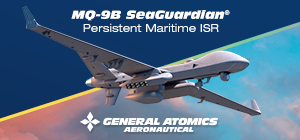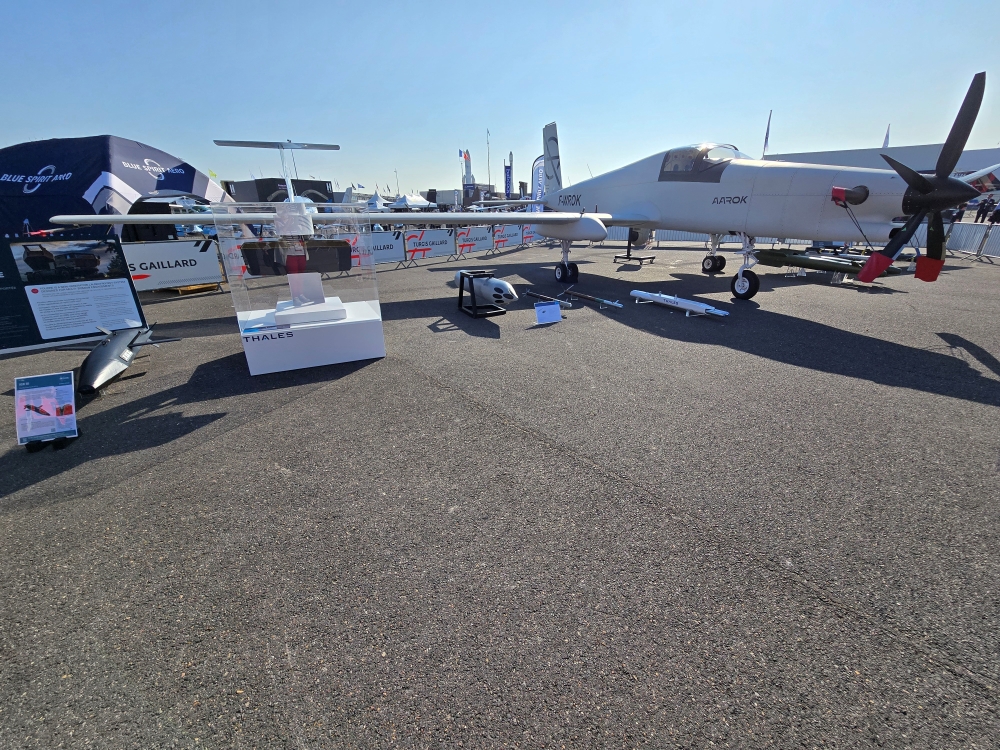
As expected, UAVs played a prominent role at the Paris Air Show (PAS) that took place at Le Bourget last week. In line with the French ambitions in the sector outlined in the guidelines of the 2024-2030 Military Programming Law, several French companies showcased their solutions, with mixed results.
Starting from micro-UAVs, Parrot presented the ANAFI UKR range, a sub 1 kg UAV for Intelligence, Surveillance and Reconnaissance (ISR) missions, available in a military, public safety and government configuration. The system can fly up to 50 minutes and identify human-size targets thanks to a thermal imaging. It can navigate in GNSS-denied environments and has a strong environmental resistance. At the booth, we learned that the ANAFI UKR, the defence version officially launched a couple of months ago, capitalises on the lessons learned in Ukraine and integrates the operational needs of boots on the ground. This is why, for instance, it can resist to -36° temperatures and its AI software is being trained to recognise a route covered of snow.
Looking at the small UAVs sector, Delair continues to draw attention. The company showcased a wide range of UAVs, conceived as robust, easy to transport and agnostics (to facilitate customisation). Indeed, the idea of the founder, Bastien Mancini, is to build technologically advanced systems while keeping them easy to use. Delair has acquired a strong operational experience, especially thanks to a long-lasting presence in Ukraine, which started with a support for the implementation of the Minsk agreement and continued with the donation of more than 100 systems to the country. During our visit to the booth, FW MAG discovered to what extent the company transforms operational feedback into new features, such as the ability to fly in GNSS denied zones (available on all models) and a clip system that allows for replacing spare parts without any tool. The DT-46 model, the company’s best seller, has greatly benefitted from these inputs in terms of technology, anti-jamming solutions and hardiness. To better respond to operational requirements for a more performing system, Delair developed the DT61, unveiled at Le Bourget. This is a heavier UAV allowing to fly longer (over 7 hours) missions and embark more sophisticated technologies (advanced optronics systems, GMTI SAR radars, and others) thanks to its 100 kg mass with a 15 kg payload.
A competition was launched in the Medium Altitude, Long Endurance (MALE) sector, with five companies (AURAERO, Daher, FLY-R, SE Aviation, and Turgis Gaillard) receiving grant agreements from the French Defence Procurement Agency (DGA) to support the development of demonstrators starting in 2026. During the PAS, we had the opportunity to better know three of them.
Turgis and Gaillard unveiled the AAROK system during the 2023 edition to everyone’s surprise, as the company had worked in secret for 3 years on the project. The drone has a 5,000 kg take-off weight, can carry up to 1,500 kg payload and has a 24 hours-long endurance. It is designed for ISR missions, strike missions (it can carry up to 250 kg of guided munitions), and communication relay missions. However, the company will first focus on maritime surveillance operations, as the partnership with Thales to integrate the AIRMASTER S radar (announced at PAS) demonstrates. Two years after the unveiling, the system completed a series of security tests (vibration of the wings, taxiing tests on the ground, slow taxiing, high speed taxiing on the runway), with flight tests expected in the coming months. However, the company has not received any order yet. Consequently, the production line is not ready, and the first deliveries might take place in 3 or 4 years, we learnt at the booth.
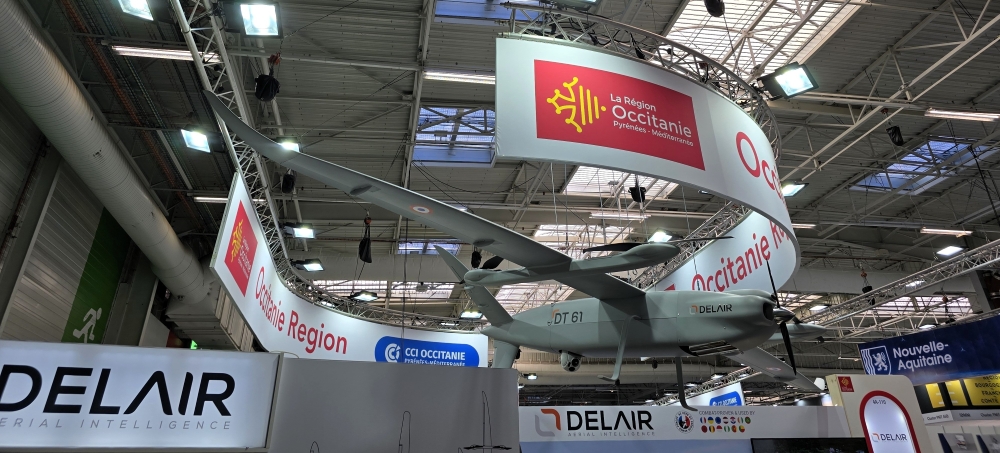
At the beginning of the show, SE Aviation and DIADES MARINE presented DRIADE, the first joint project for the two companies, specialised in light aircraft assembly and maintenance and navigation-assistance equipment, respectively. During the unveiling ceremony, the two Presidents said that the project originates from the willingness to provide a concrete operational solution in this domain, building up on the strong know-how in the respective sectors and the efficiency that a collaboration among SMEs might bring. DRIADE, a derivation of the MCR4S ultralight aircraft, has an 820 kg take-off weight, and can carry a 166 kg payload, with maritime surveillance (DIADES MARINE’s core business) as primary mission, at least at the beginning. We understand that the standard payload for maritime surveillance will feature the DIADES MARINE C-RANGER 200 airborne radar and the Milvus 25S gimbal from the French SME Merio. The prototype exhibited at the PAS was built in six months, and its first flight is scheduled in autumn to obtain the European Union Aviation Safety Agency (EASA) certification as soon as possible. The two Presidents are aware that this model is in the lower range of MALE proposals, both in terms of performances and technologies on board. However, they consider their long-lasting experience (SE aviation owns 200 MCR4S, and DIADES MARINE provides radar to Frontex) and the fact that the production line is already operational as main assets for their system. Indeed, deliveries are possible in a six-month timeframe – maybe one year for the first models.
AURA AERO as well wants to capitalise as well on its experience in two-seats aircraft, namely the Integral series. Its UAV, EMBATA, will be developed in collaboration with Thales, Safran and Aresa and is intended to be dual-use, multi-mission, ITAR free UAV, expected to fly by 2028. In addition to the aircraft design, the company aims at mutualising all the complex systems integrated in its aircrafts.
Concluding remarks
At PAS, France reaffirmed its commitment to developing sovereign capabilities in the UAV sector. However, the current government strategy may not be the most effective. In a context of constrained budgets and significant project delays - such as the Safran Patroller UAV, which took eight years to deliver, and the uncertain future of the EUROMALE program - spreading investments across multiple initiatives simultaneously could prove counterproductive. While industry efforts to introduce new systems are commendable, none of the current MALE UAV proposals stand out as truly cutting-edge. This outcome is unsurprising, given that order books remain empty despite the government’s stated interest.
Pursuing sovereign technologies at any cost in any segment - resulting in higher-priced, less advanced systems compared to international competitors - does not appear to be a viable strategy, particularly amid heightened geopolitical instability and economic uncertainty. Perhaps France should concentrate its resources on its most advanced technological niches (such as smaller UAVs) and consider procuring off-the-shelf solutions - preferably from European partners offering ITAR-free products - for segments where domestic expertise is lacking and will take years to build-up.
Follow us on Telegram, Facebook and X.
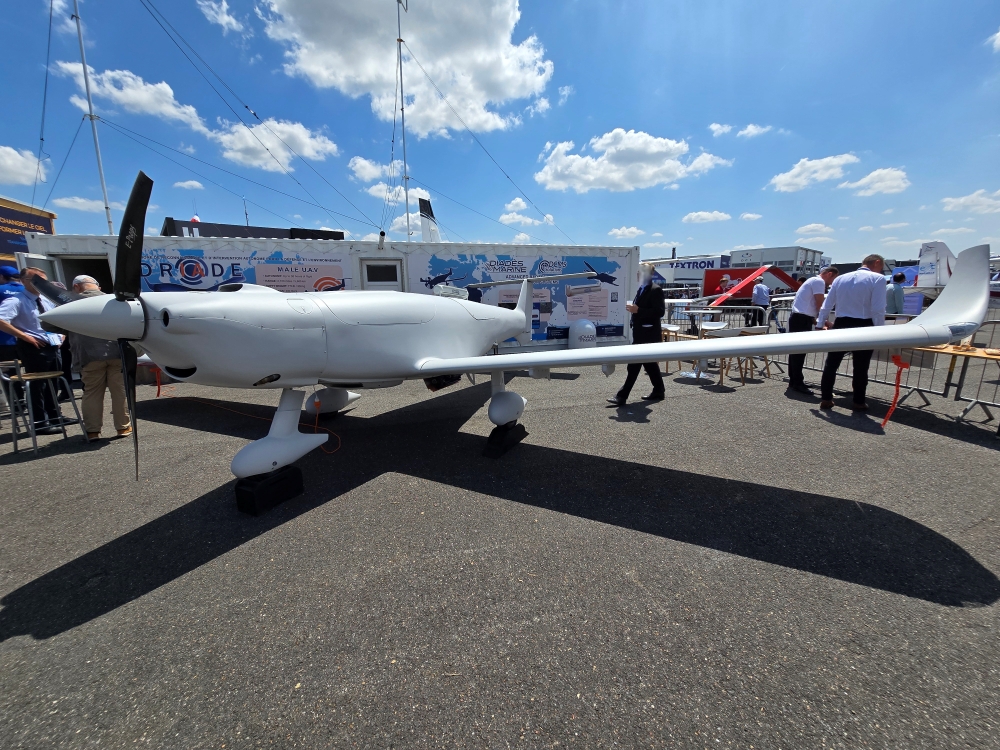




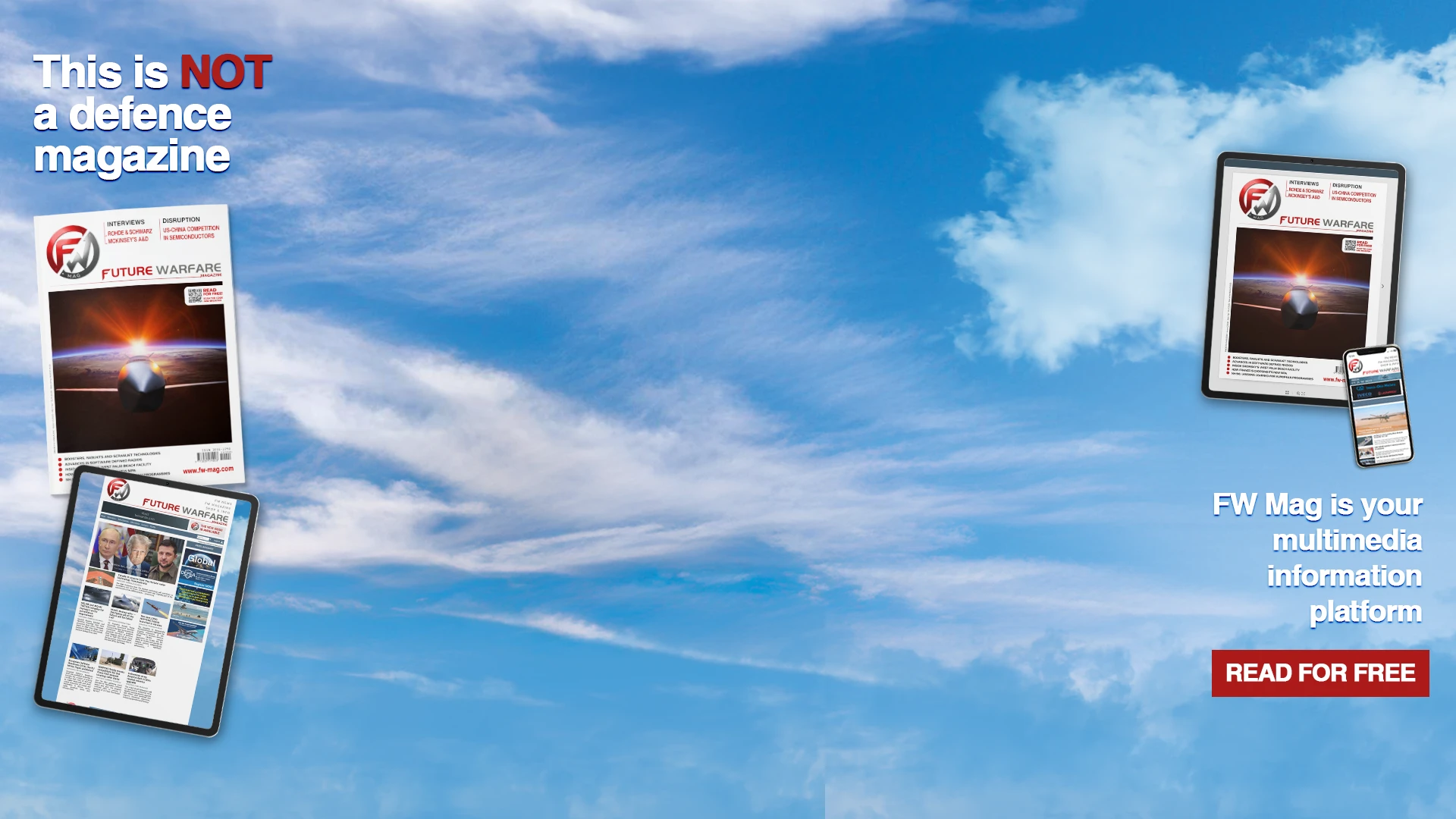



.png)
